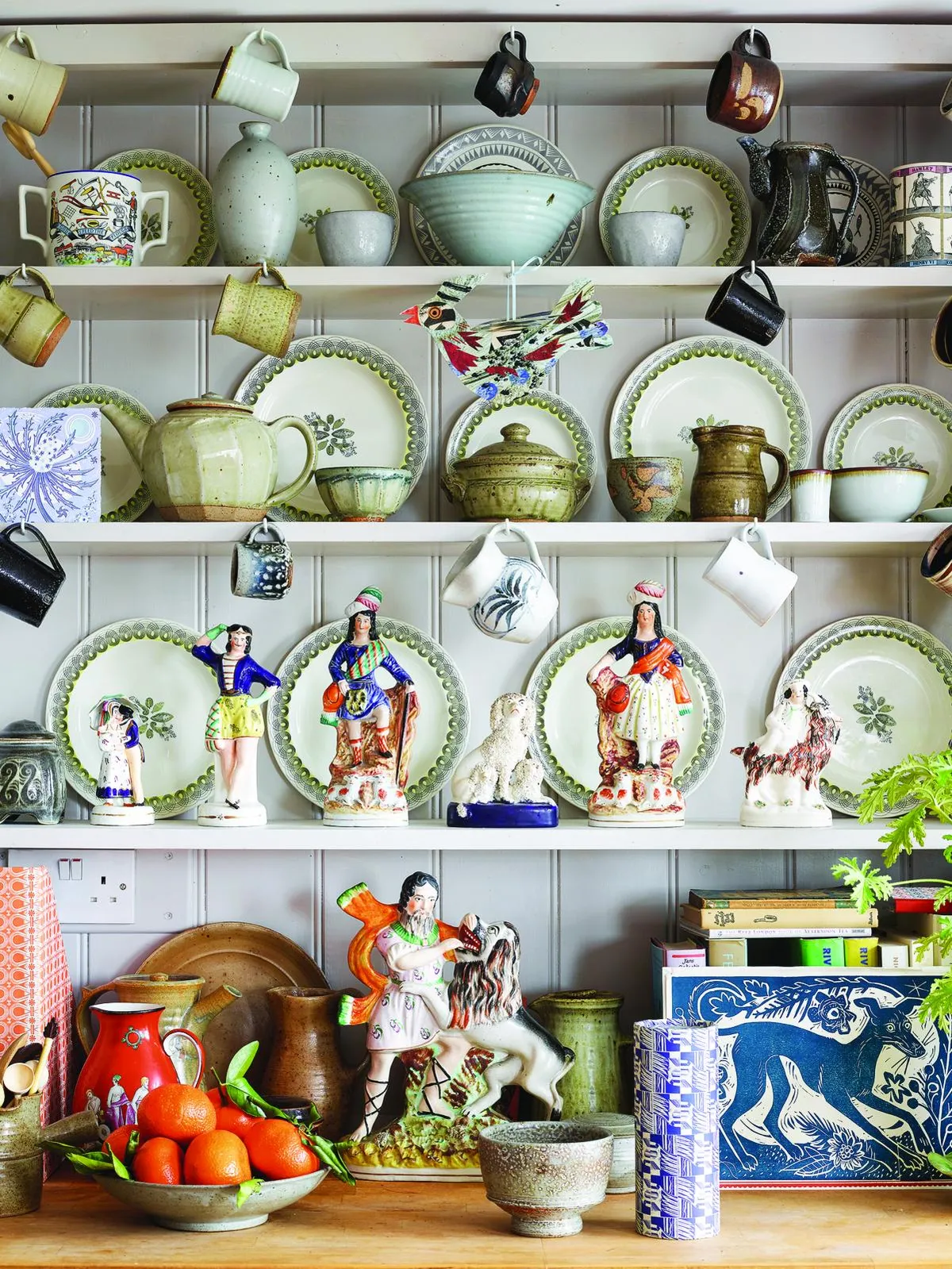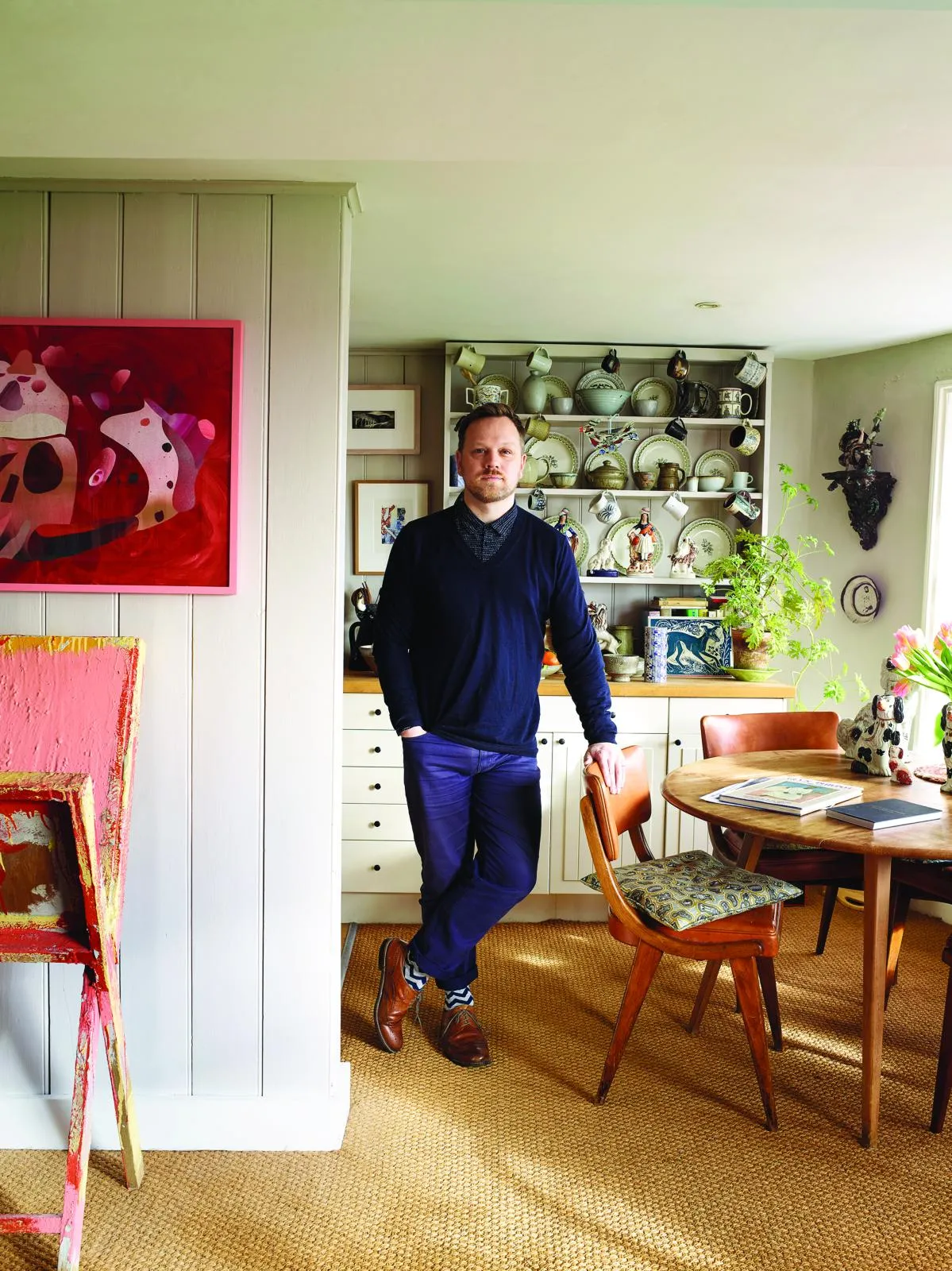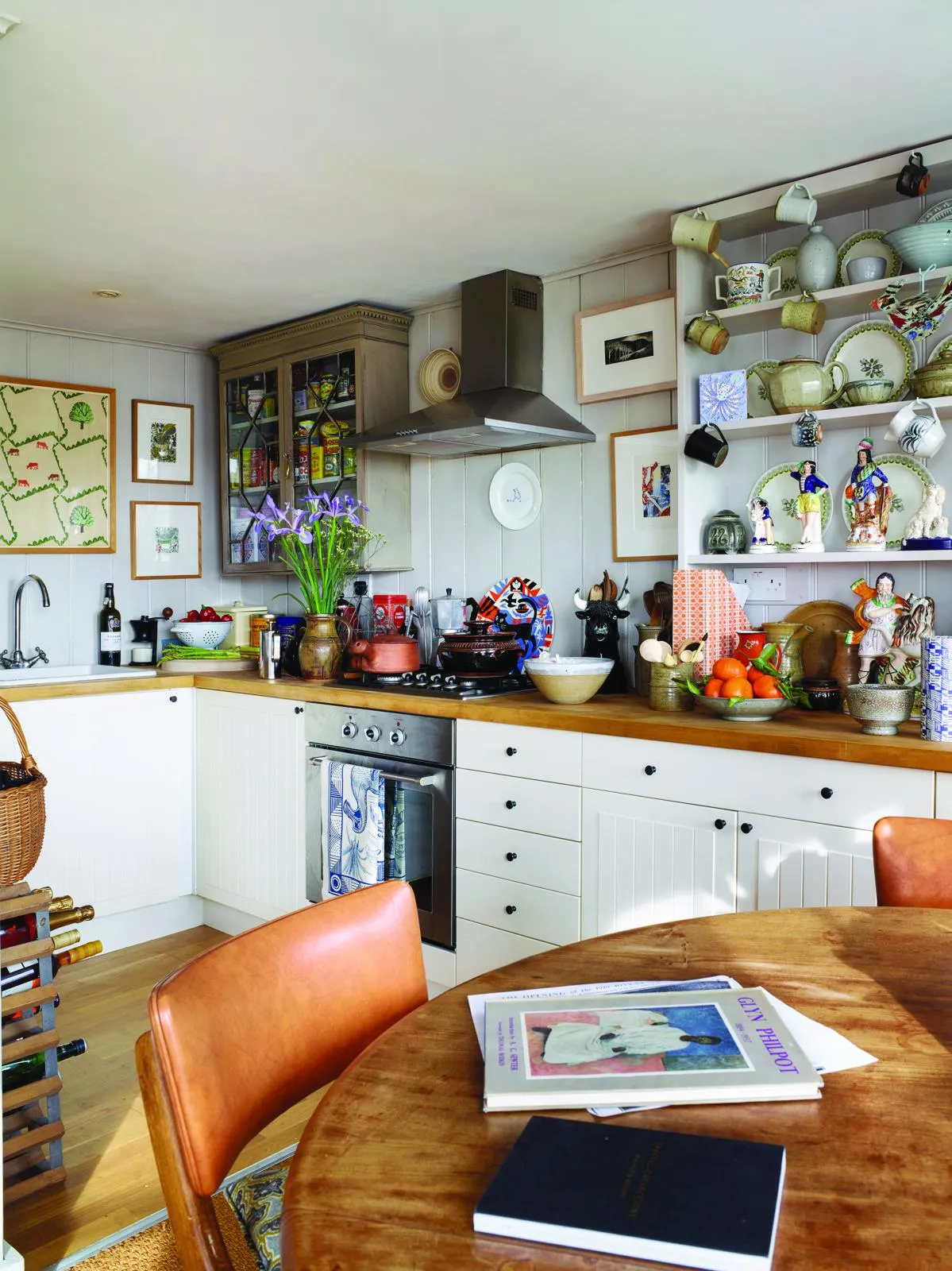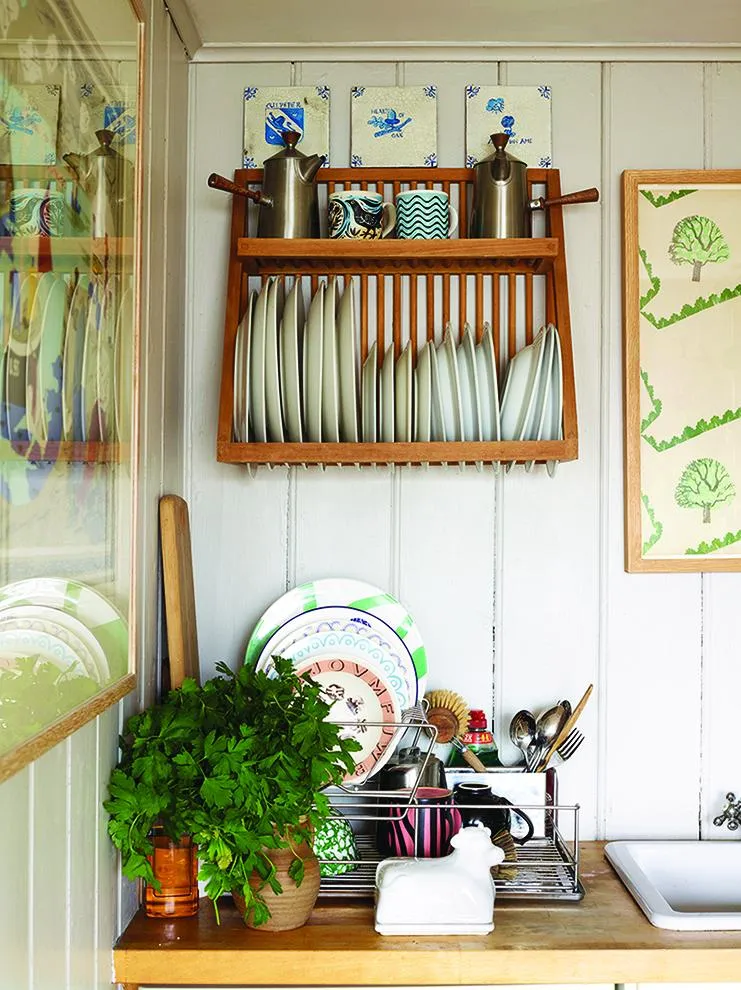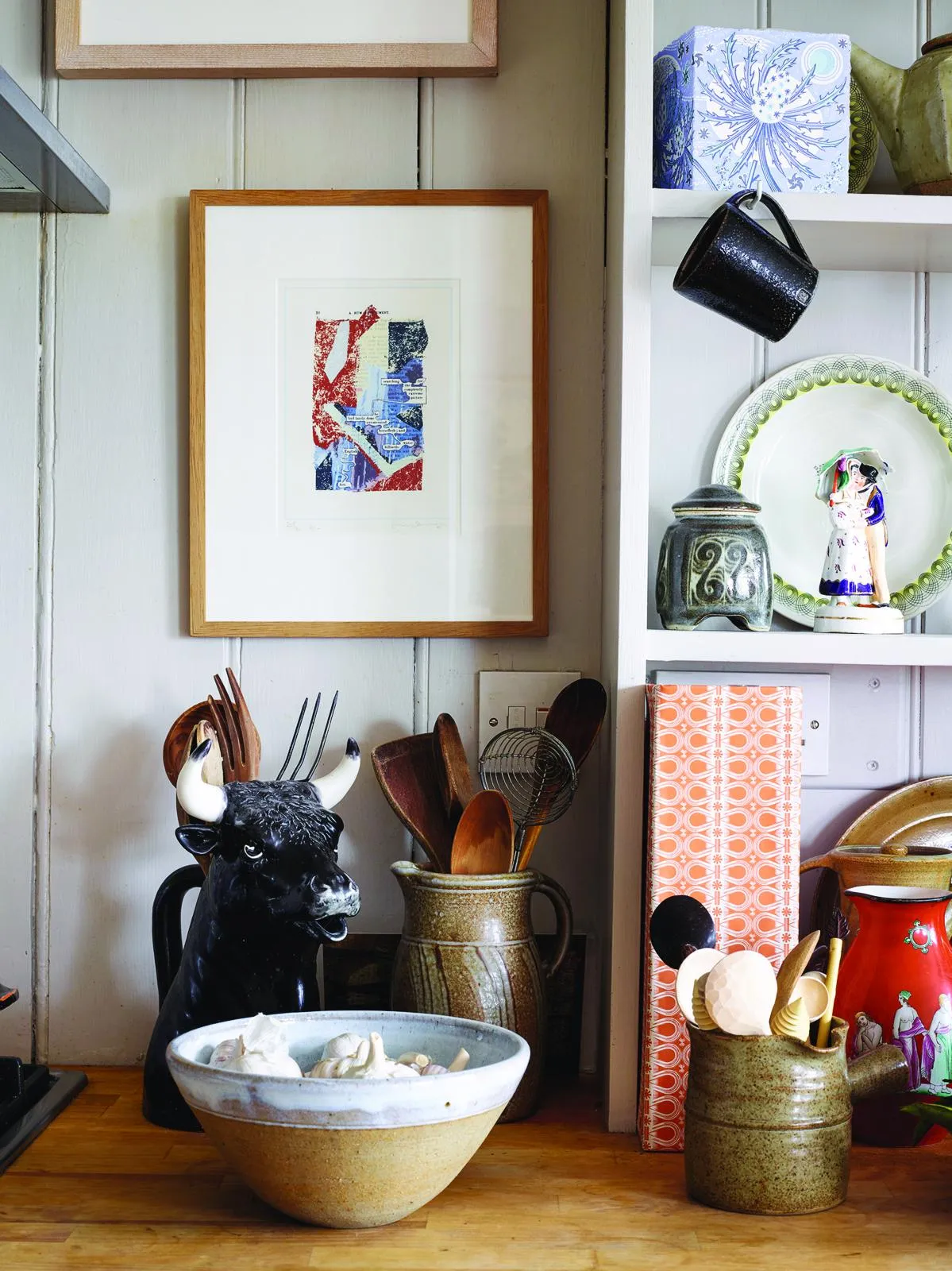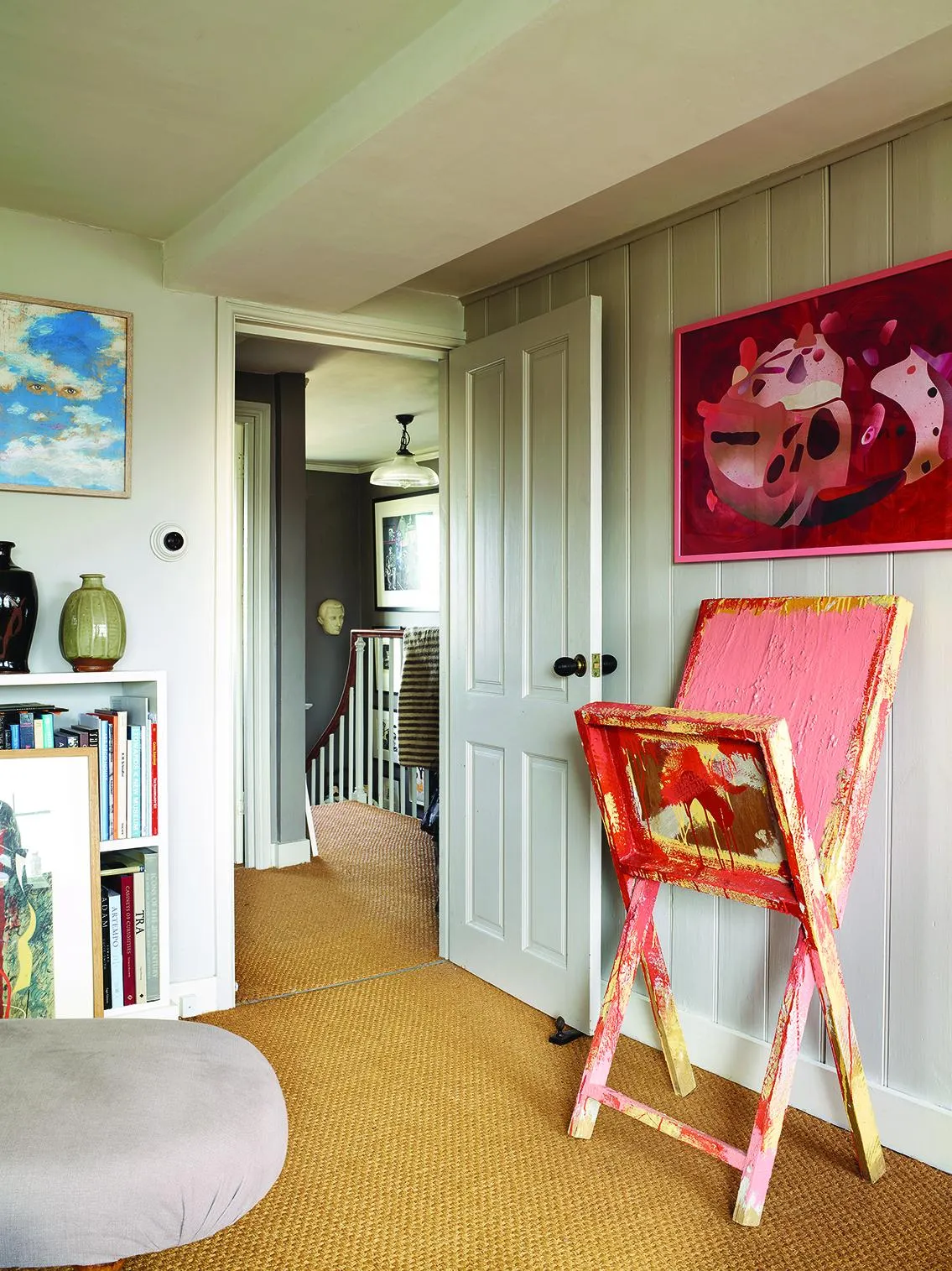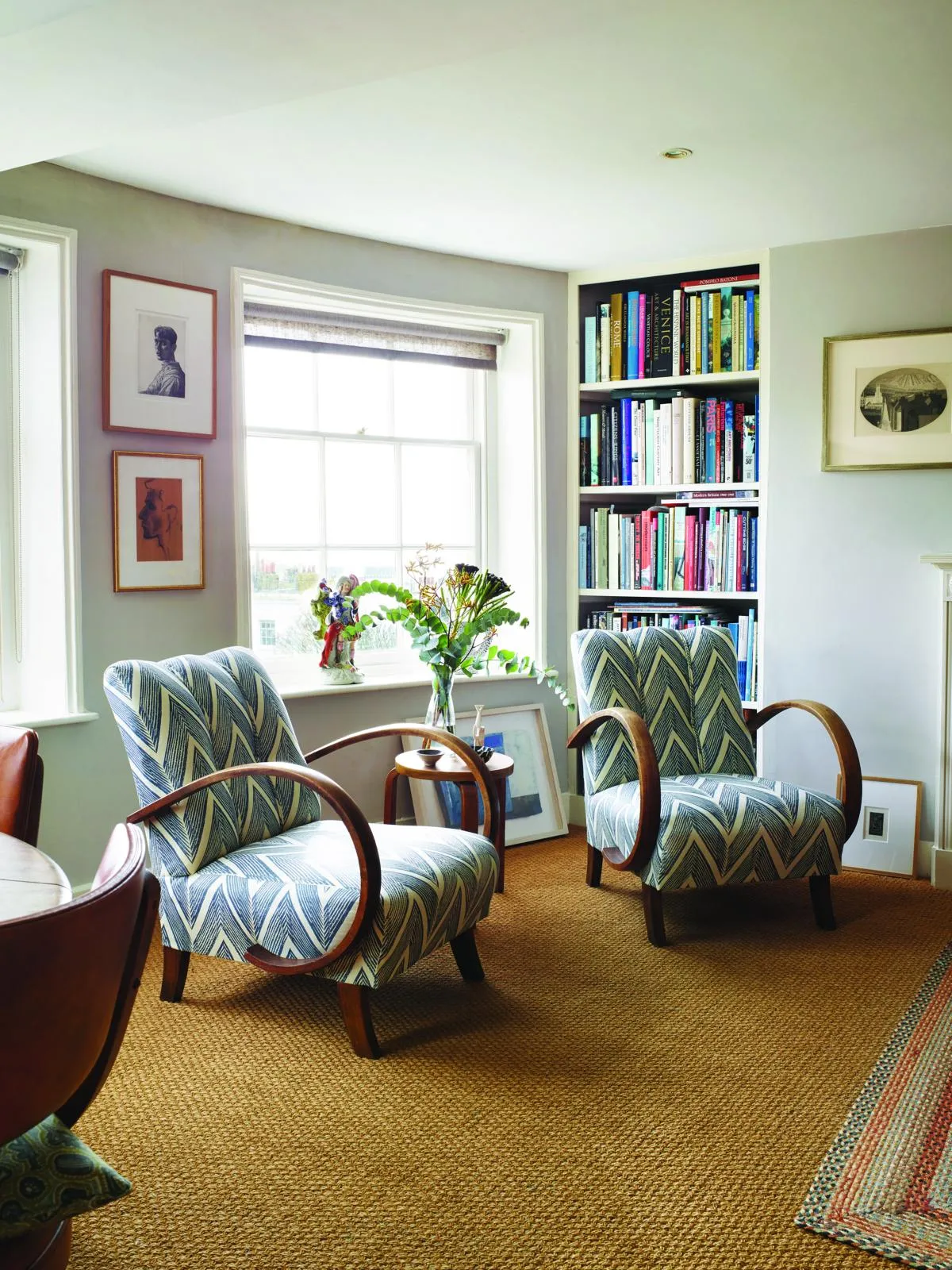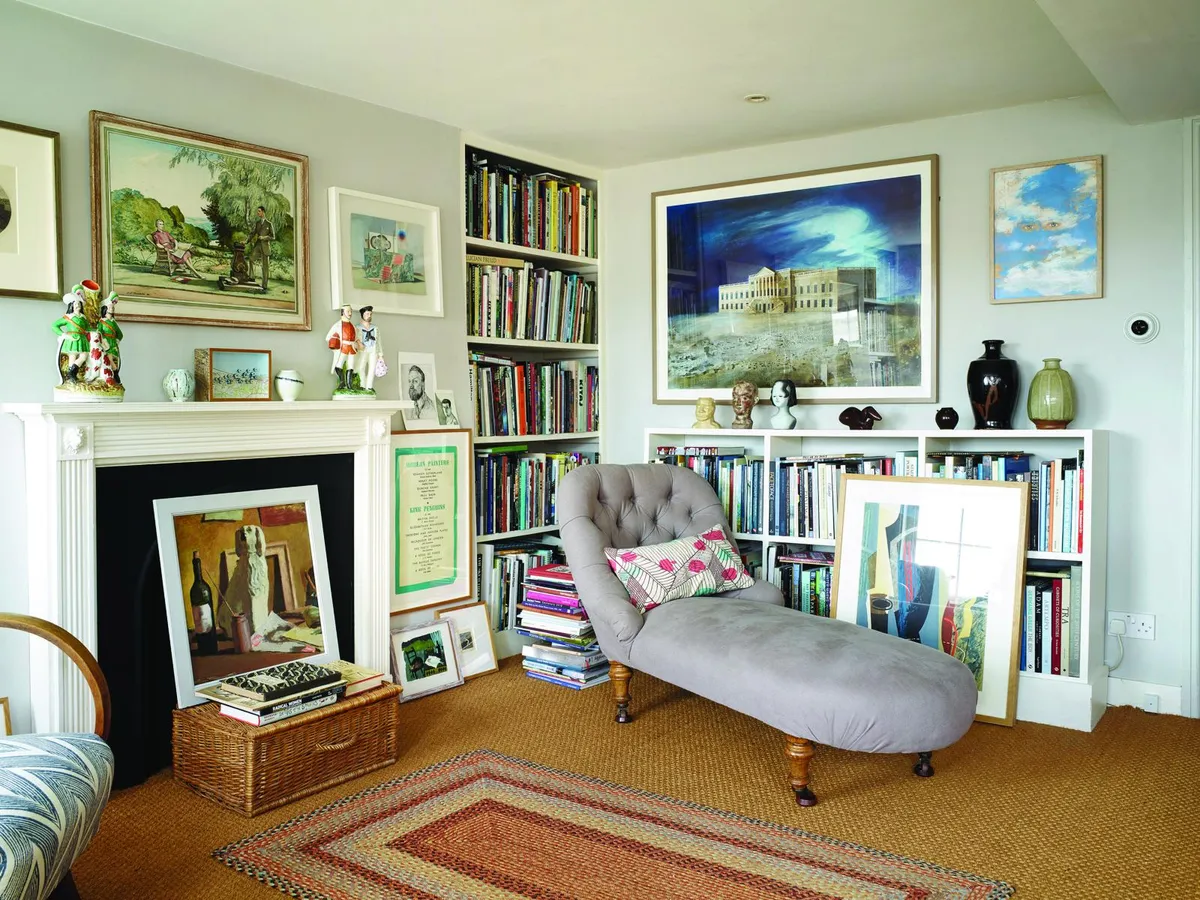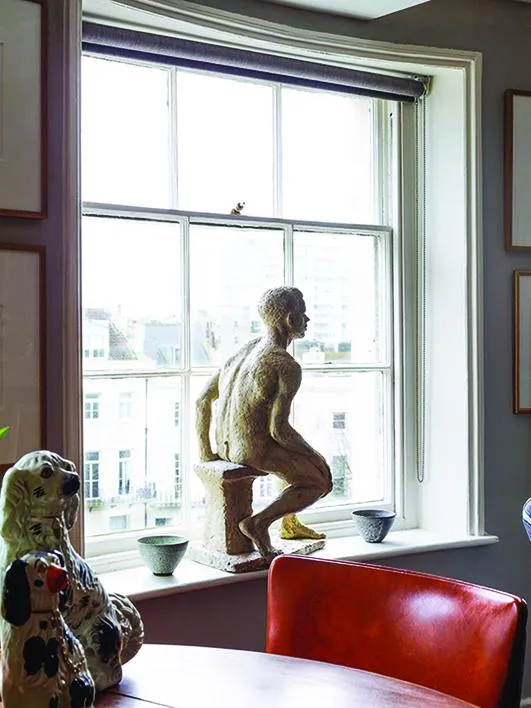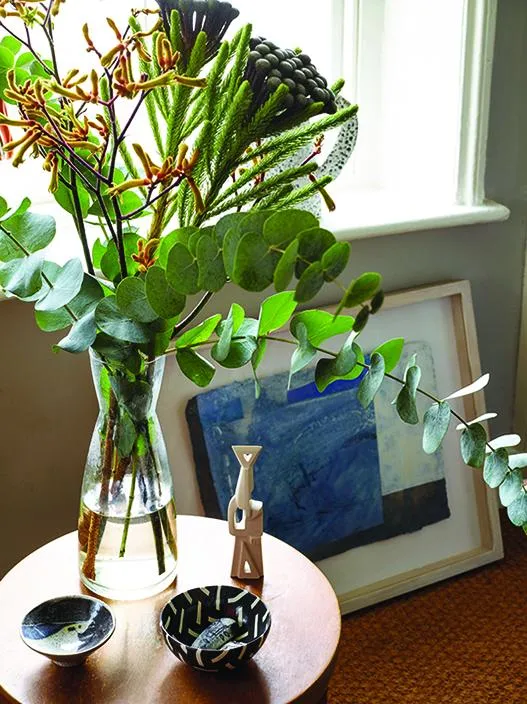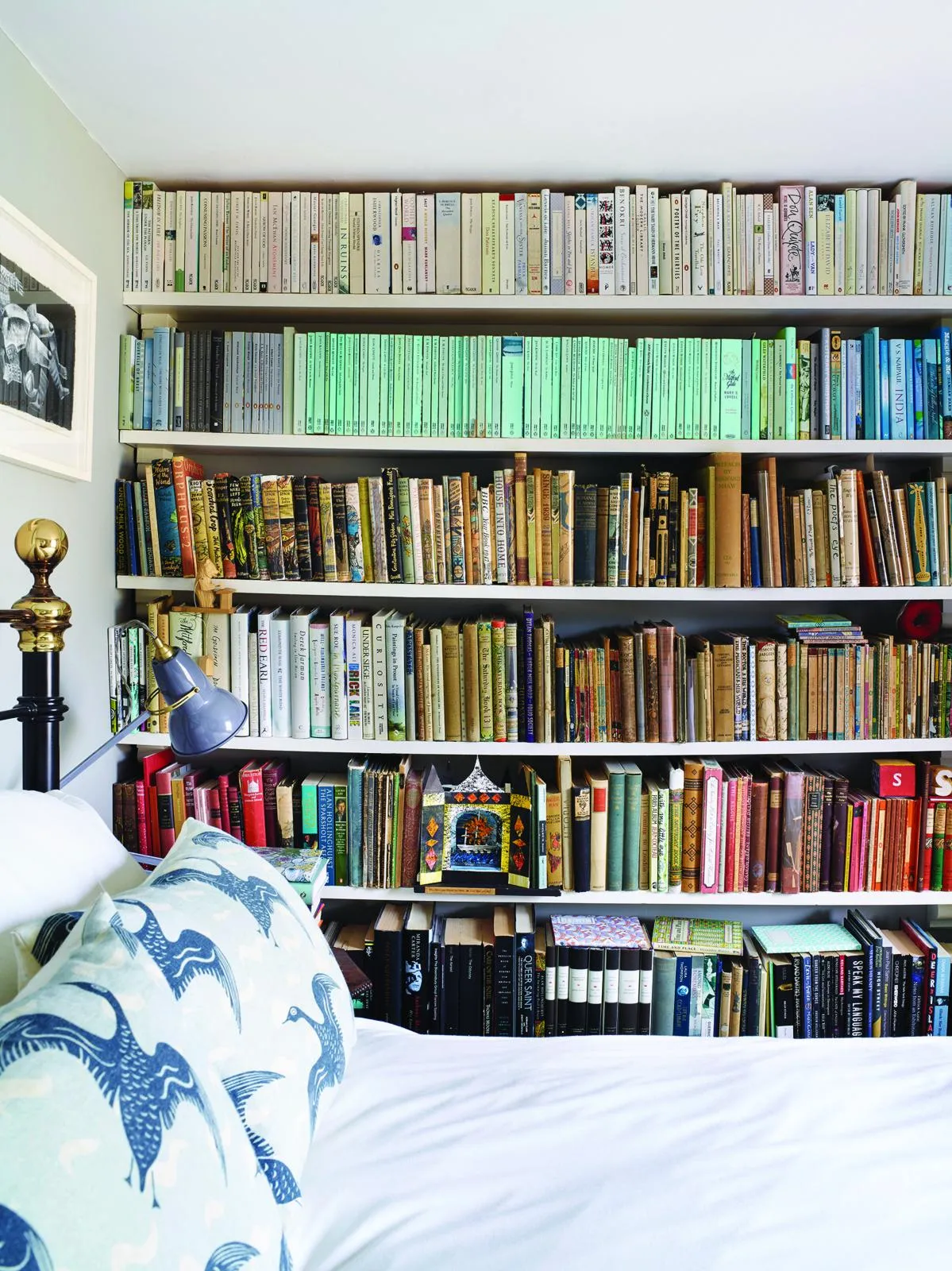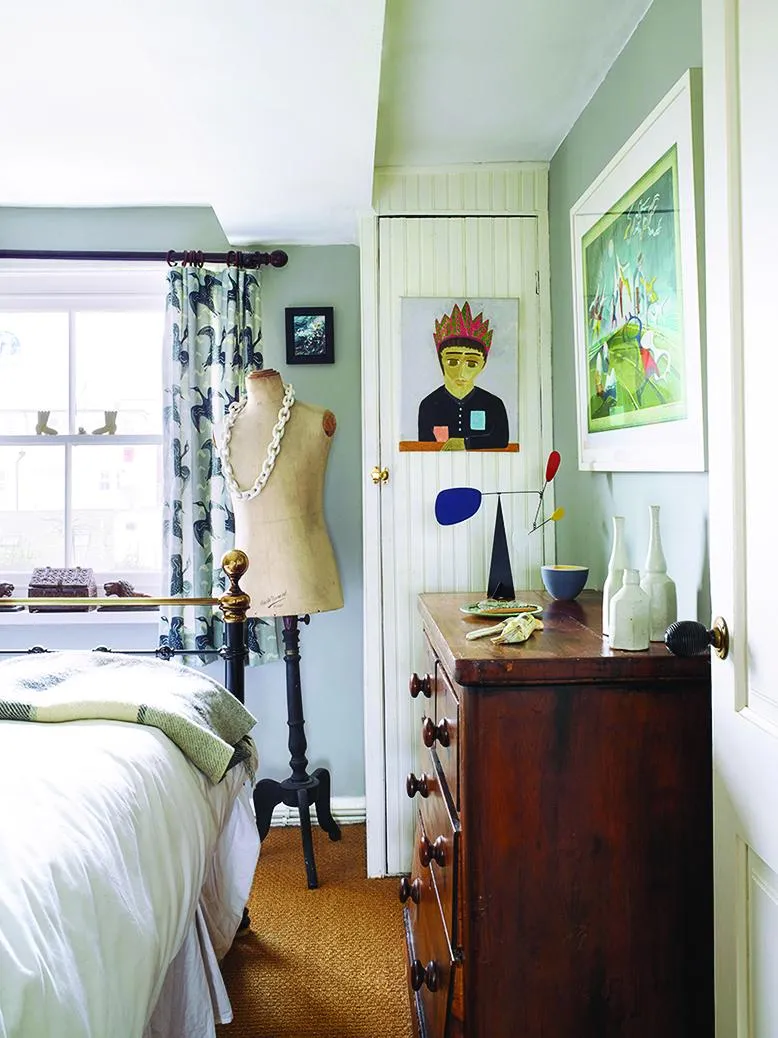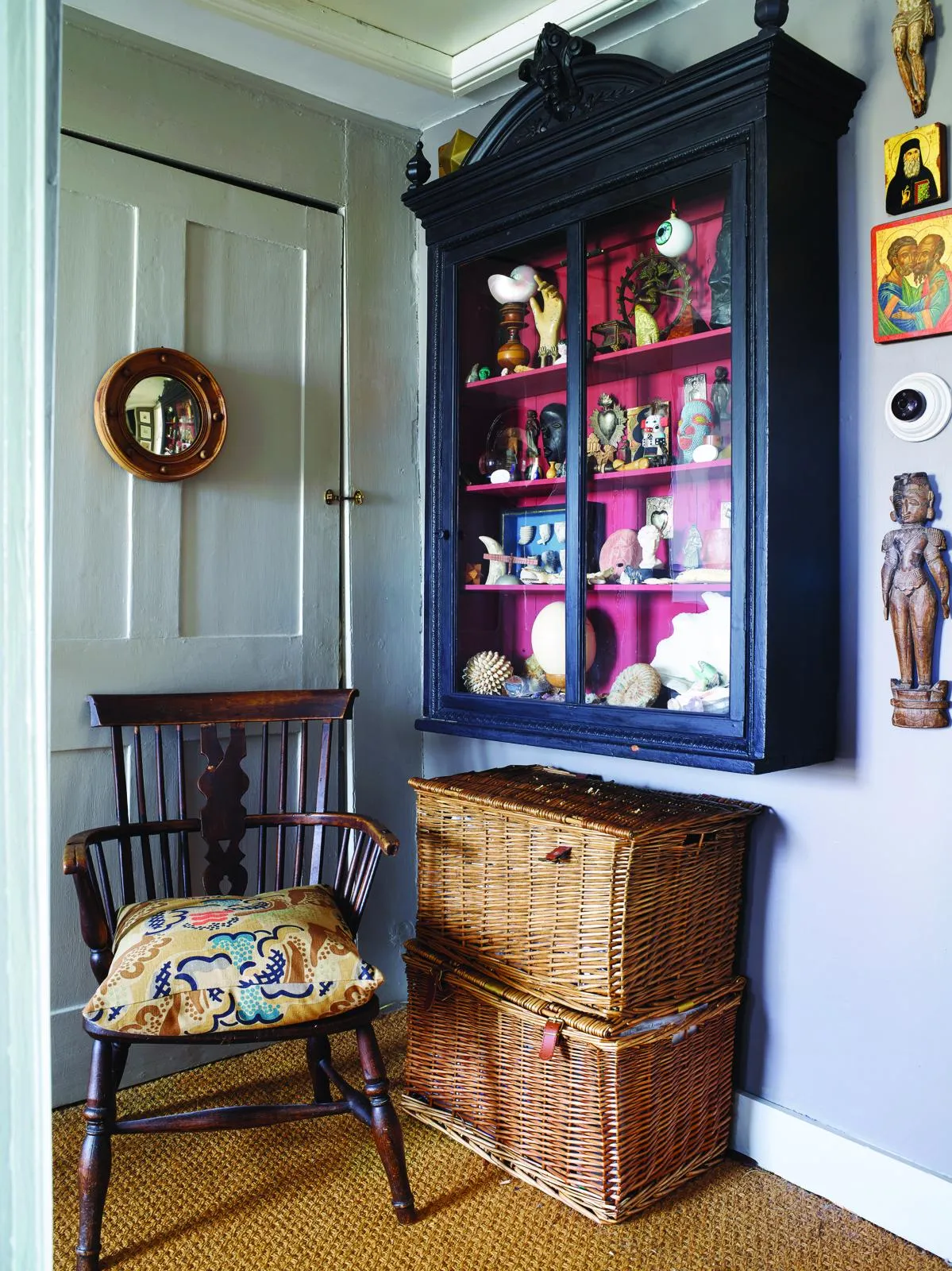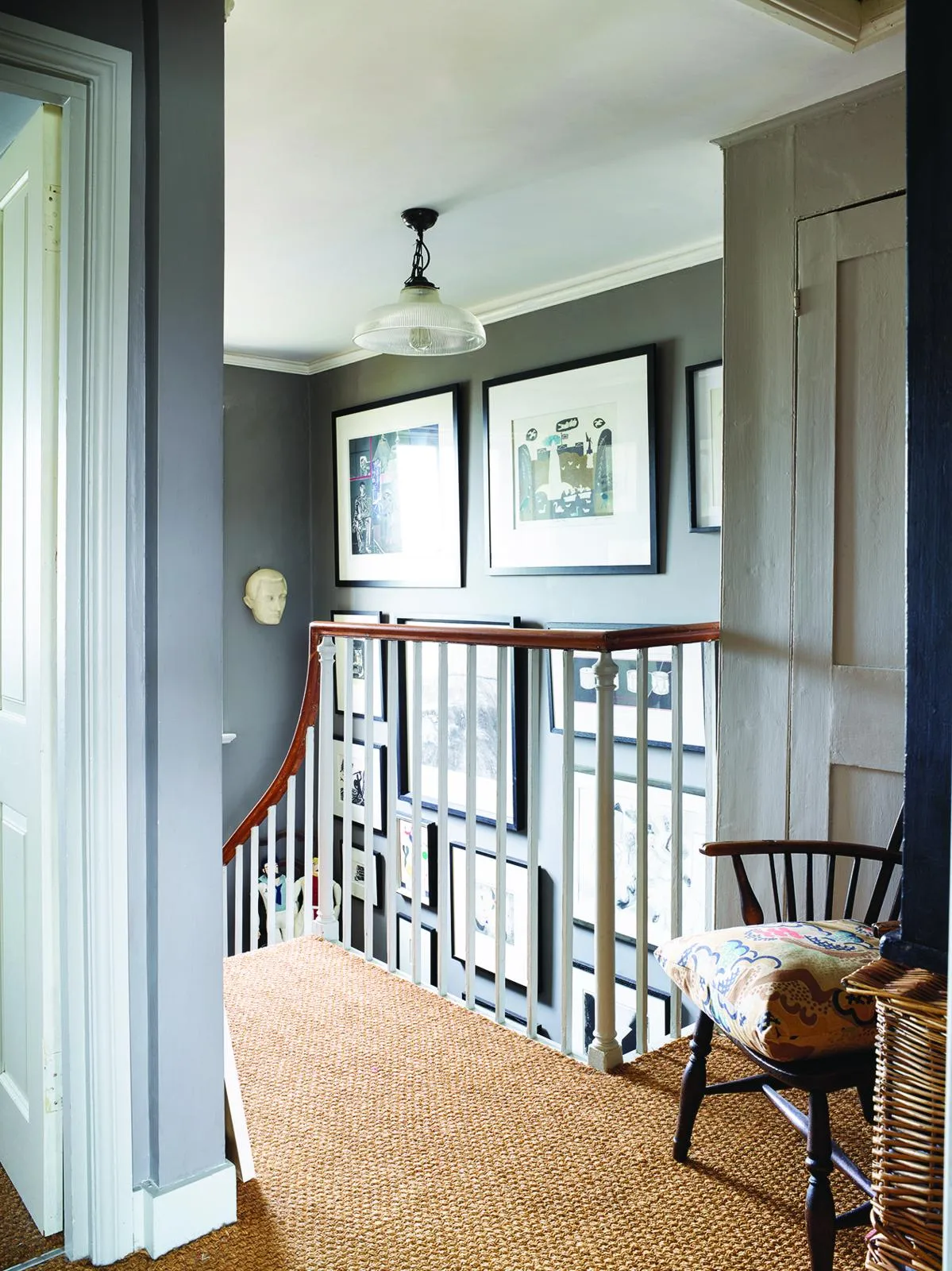Halfway through a tour of his Brighton apartment, Simon Martin’s gaze alights on the watercolour above the chimneypiece. It is a 1940s conversation piece by the British artist JS Goodall. Simon found the painting at a local market and, intrigued by the inscription on the back, decided to do some digging. This led him to discover that one of the sitters is probably Jack Sprott, a member of the Bloomsbury Group, whose bohemian circle included Lytton Strachey and EM Forster.
This is the sort of detective work Simon enjoys. As Director of Pallant House Gallery in Chichester, he has acquired a reputation for exploring the lesser-trodden reaches of the art world through exhibitions of overlooked 20th-century British artists. Exhibitions of work by John Minton, Edward Burra, or the surrealist John Tunnard were the first to be held in a museum in almost 50 years.
His own home is also full of compelling discoveries. The compact, one-bedroom apartment is set in a bow-fronted, bay-windowed Regency townhouse on a seafront square. Simon, whose off-duty garb favours those high-waisted, ‘Oxford bags’ trousers sported by 1930s intellectuals, refers to it as his ‘analogue’ home.
He has a digital radio but no television. This is just as well, because a shiny black rectangle would detract from the warm, cultured setting. Dotted with art, folkish pottery and bentwood furniture, it brings to mind the closely observed interiors by Edward Bawden, Eric Ravilious, or any other of those 20th-century artists Simon admires.
When he first saw the apartment in 2012, it was in a lamentable state: ‘The kitchen was a ruin and almost everything original had been ripped out, apart from the staircase, which was coated in about 20 layers of paint. But, by then, I had fallen in love with the sea views over the rooftops. I also knew that my London friends would come and visit me here.’
Over time, Simon has replaced lost features – the panelled doors and architraves – adding details, such as the round Bakelite switches, which suit its ‘historic-Modernist’ feel. Peeling back layers of decoration in the stairwell, he discovered the original Victorian Gothic Revival wallpaper. The deep grey of its pattern inspired the new paintwork.
He chose a softer, gallery-white for the sitting room, where light pours in through sash windows. Simon found the chimneypiece on eBay (it had been ripped out of a nearby house) and designed the shelves to house his art history books, ranked chronologically on one side, alphabetically on the other.
The pair of 1930s bentwood chairs are by the Czech Modernist designer Jindrich Halabala. Simon found them at Hand of Glory Antiques in Chippenham, who had sourced them from the film set of The Little Stranger. They have been appropriately reclad in Enid Marx’s 1935 Zig Zag fabric.
Works of art by friends, such as Angie Lewin, Ed Kluz and Kate Jenkins, sit alongside his canniest find: a painting by Maggi Hambling, spotted in a box of frames at a local market and bought for £2. He is equally fond of the Staffordshire dogs, which remind him of the bohemian interiors at nearby Charleston, where he is a trustee.
Other artworks mark significant moments in Simon’s curatorial life. A box work by John Dilnot is decorated with a flock of swallows in flight over the Norfolk coast, which is where Simon grew up, and in 2009 he curated a show at the church at Salthouse. Simon bought the screenprint St Ives Axonometric Blue, 2004, after commissioning a drawing from the artist Toby Paterson for Pallant House.
There are personal mementoes, too. A jug on the window sill is by the late ceramicist Emmanuel Cooper. ‘He was a mentor to me until his death in 2012, encouraging me to write about ceramics and art and asking searching questions,’ says Simon, who frequently contributes to artist’s monographs.
More esoteric finds crowd the shelves of the ‘Wunderkammer’ on the landing. Simon’s version of the baroque cabinet of curiosities turns out to be a 19th-century shop cabinet, another market find. Its painted shelves house fossils, an ostrich egg and a reliquary box which opens to reveal the ‘Turd of St Agatha’, a fossilised turtle dropping. We inspect it before swiftly moving on to a wooden doll from south India, where Simon spent his gap year working on a Gandhian farm.
He confides that he once dreamt of becoming a priest until a family trip to Italy consolidated his childhood interest in art. Art History was not on the curriculum at school, so he took himself off to night school. ‘It’s often portrayed as elitist. But there I was, surrounded by people of all ages and backgrounds and having discussions about politics and colonialism, which I could never have had at school.’
He spent a year in Venice as part of his degree, before studying at the Courtauld Institute of Art, where he wrote his thesis on British portraitist Glyn Philpot. ‘The day after I handed in my thesis I started work as Assistant Curator at the Pallant.’ And there he has remained.
Set in a Queen Anne townhouse, the Pallant was built in 1712 for the ‘disreputable’ wine merchant Henry Peckham. In 1982, the Grade I-listed building became a gallery, when Walter Hussey, Dean of Chichester Cathedral, offered his collection of art by Henry Moore, Graham Sutherland and others to the city, with the proviso that the Pallant became a gallery in which to show it.
The addition of a Modernist extension by Sir Colin St John Wilson, architect of the British Library, and his wife, the architect MJ Long, allowed the collection to expand to include works by the Bloomsbury Group, Damien Hirst and continental greats, Picasso, Degas and Vuillard.
But there are still gaps to be filled, in particular work by female artists and people of colour. ‘The collection can’t be static, it needs to evolve. People are asking difficult questions about museums now,’ says Simon. Last year, the Pallant acquired a collage by British pop artist Pauline Boty as well as works by Chris Ofili and Sonia Boyce. The show ‘Radical Women’ focused on anti-fascist artists including Edith Rimmington, Barbara Hepworth and Jessica Dismorr, much of the work never displayed to the public before.
Although the pandemic has not been kind to the art world, Simon remains optimistic. ‘We had to shift some exhibitions from 2020 to 2021, and our income has dipped dramatically. But, for a gallery of our size, we’re fortunate to have 5,000 remarkable works, which will form the basis of our exhibition programme, together with a major exhibition about Ben Nicholson this summer.’
Working from home had its perks too. The extra time afforded by not commuting was devoted to his latest ‘nerdish’ enthusiasm: ‘Ex Libris’ labels pasted into books to denote ownership. Simon has tracked down some fine examples by Edward Burne-Jones, Rex Whistler and Paul Nash, and he delights in unravelling their stories: ‘Part of the joy of collecting is the
mental gymnastics needed to understand an object. It’s all about sleuth work.’
